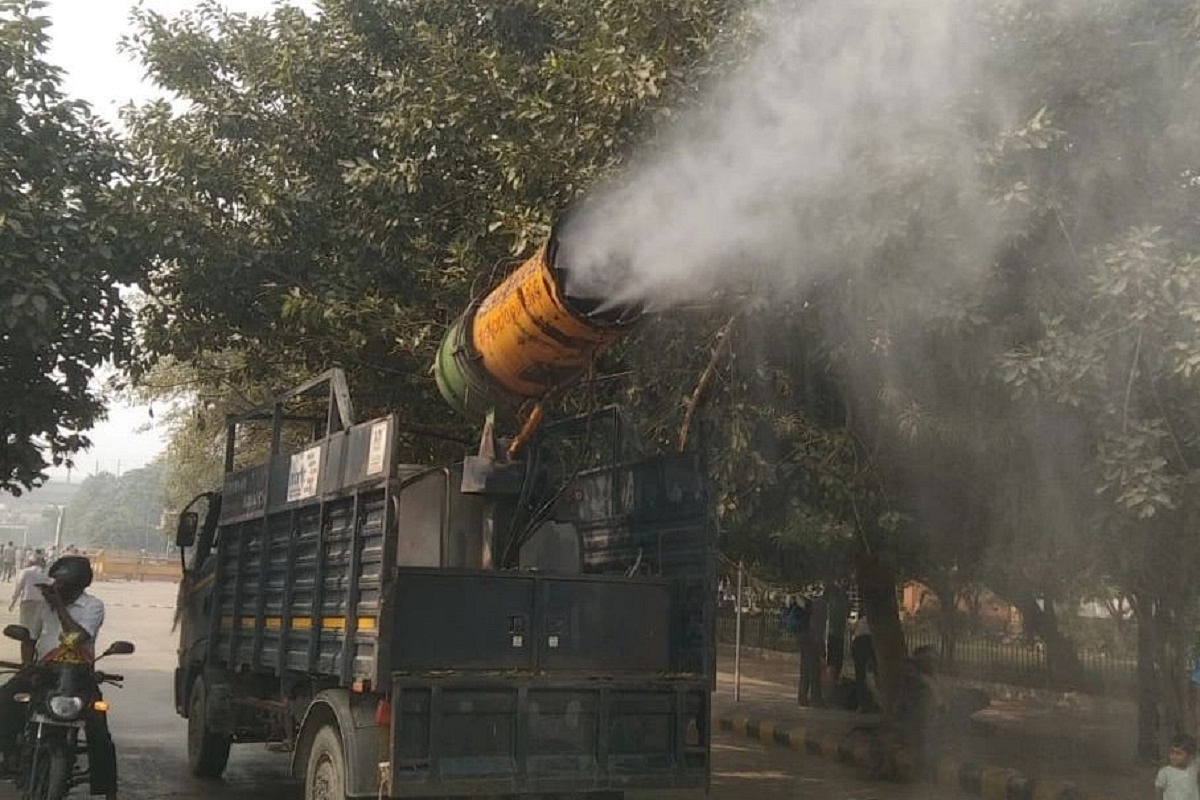News Brief
NCRTC Intensifies Efforts To Curb Air Pollution Near Construction Sites
- NCRTC has intensified efforts to control construction-related pollution in Delhi.

NCRTC takes up pollution control measures.
National Capital Region Transport Corporation (NCRTC) has been taking a series of measures to curb pollution caused by the construction of the Regional Rapid Transit System (RRTS) project.
With Delhi’s air turning toxic and environmental situation of the Delhi-NCR worsening by the day, the implementing agency of the RRTS project, said it has further intensified its efforts to deal with the situation by stringently following the guidelines of the Central Pollution Control Board (CPCB).
Anand Vihar is one of the major transport hubs of Delhi, with Anand Vihar Railway Station, Vir Haqiqat Rai ISBT, UPSRTC stand and two metro lines situated here.
With multi-modal integration at its core, the Anand Vihar RRTS station site is also in close vicinity of the already existing transport modes.
Anand Vihar RRTS station is an underground station, where most of the construction is being conducted at least 25-30 feet below the ground level.
Keeping environmental concerns at the forefront since the beginning of the project, NCRTC has been using pre-cast segments for construction.
Pre-casting helps in the safe and fast execution of the works while ensuring good quality control, minimising inconvenience to the road users, local passers-by, business owners and residents along the entire stretch, and reduction in air pollution and noise pollution.
The tunnel segments being used for the construction of tunnels at Anand Vihar are being cast at NCRTC's casting yard in a controlled environment with assured quality control. These are brought to the sites laden on the trailers during the night time to reduce the traffic problems and cause less public inconvenience.
The requirement for in-situ construction is the minimum at this site. Moreover, the muck extracted from the tunnels is wet muck and the site is mostly wet. Hence, the chances of dust pollution at the site are minimal.
Ten such casting yards have been established on the entire 82 km long Delhi-Ghaziabad-Meerut corridor and the same type of measures are being taken in each of them.
Moreover, truck-washing plants, sprinklers and anti-smoke guns have been installed at the RRTS construction sites.
Anti-smog guns are being used frequently to control the dust and pollution caused by construction work and water is being sprinkled from water tankers at the construction site to prevent flying dust.
Twenty such sprinklers and six anti-smog guns have been installed at the Anand Vihar construction site at a certain height. Mobile vehicles for the water sprinkling have also been deployed at the site and their number will be increased in the future.
NCRTC also conducts mechanised/vacuum sweeping of roads near the construction sites for dust control and the frequency of it has been intensified.
Further, NCRTC has also constituted a special task force comprising senior officials of NCRTC to monitor and supervise the implementation of the pollution control measures.
In order to present a solution to this problem, RRTS is a long-term strategic intervention by the government of India and four state governments, Delhi, Haryana, Uttar Pradesh and Rajasthan.
Once operational, RRTS will act as a transportation backbone for the entire NCR. The first RRTS corridor alone is expected to reduce vehicular congestion with more than 1 lakh vehicles going off the roads and will help reduce air pollution with more than 2.5 lakh tonnes of carbon dioxide in vehicular emissions coming down.
Support Swarajya's 50 Ground Reports Project & Sponsor A Story
Every general election Swarajya does a 50 ground reports project.
Aimed only at serious readers and those who appreciate the nuances of political undercurrents, the project provides a sense of India's electoral landscape. As you know, these reports are produced after considerable investment of travel, time and effort on the ground.
This time too we've kicked off the project in style and have covered over 30 constituencies already. If you're someone who appreciates such work and have enjoyed our coverage please consider sponsoring a ground report for just Rs 2999 to Rs 19,999 - it goes a long way in helping us produce more quality reportage.
You can also back this project by becoming a subscriber for as little as Rs 999 - so do click on this links and choose a plan that suits you and back us.
Click below to contribute.
Latest